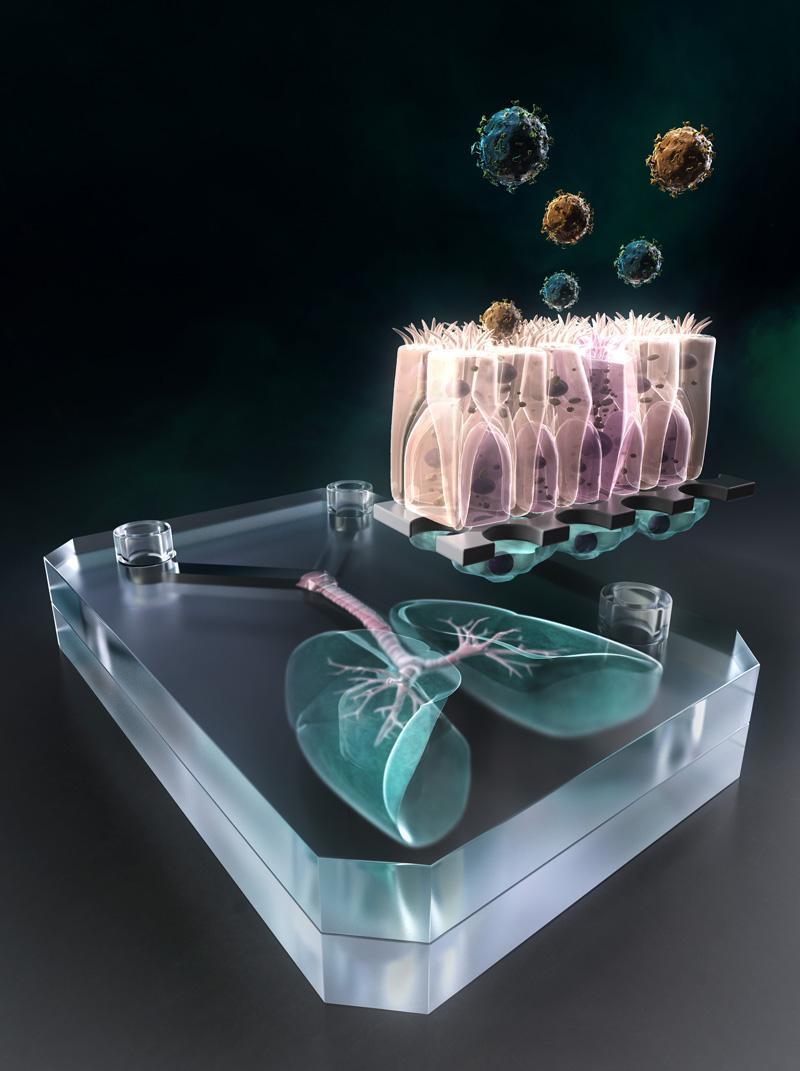
Lung-on-a-chip: A Revolutionary Device to Detect and Fight Pandemics Early
The COVID-19 pandemic has brought the world to a standstill, and its impact on human health has been unprecedented. The rapid spread of the virus has highlighted the need for more effective and efficient methods to detect and combat emerging diseases. In recent years, scientists have been working tirelessly to develop innovative solutions to combat pandemics. One such breakthrough comes from Kyoto University, where researchers have developed a “lung-on-a-chip” – a micro physiological system (MPS) that can emulate different regions of human lungs, specifically simulating the airway and alveoli.
The “lung-on-a-chip” is a revolutionary device that can help scientists study how viruses like COVID-19 affect the lungs differently. This cutting-edge technology has the potential to detect emerging viruses and facilitate early drug screening, ultimately leading to more effective treatment options and reduced mortality rates.
How the “Lung-on-a-chip” Works
The “lung-on-a-chip” is a microfluidic device that mimics the structure and function of human lungs. The device consists of two layers of cells – one layer mimics the airway and the other layer simulates the alveoli. These layers are separated by a thin membrane, which allows for the exchange of gases and molecules.
The device is designed to mimic the natural environment of the lungs, allowing scientists to study how the lungs respond to different conditions, including the presence of viruses. By analyzing the response of the “lung-on-a-chip” to various stimuli, researchers can gain valuable insights into how viruses like COVID-19 affect the lungs and develop more effective treatments.
The Potential of the “Lung-on-a-chip”
The “lung-on-a-chip” has far-reaching potential in the fight against pandemics. Some of the key benefits of this technology include:
- Early Detection of Emerging Viruses: The “lung-on-a-chip” can be used to detect emerging viruses and simulate how they affect the lungs. This can help scientists develop more effective diagnostic tests and treatments.
- Improved Drug Screening: The device can be used to test the efficacy of potential treatments by simulating the effects of different medications on the lungs.
- Reduced Animal Testing: The “lung-on-a-chip” can reduce the need for animal testing, which is not only time-consuming and expensive but also raises ethical concerns.
- Personalized Medicine: The device can be used to develop personalized treatments for patients with lung diseases, taking into account their unique characteristics and responses to different treatments.
The Future of Pandemic Detection and Treatment
The “lung-on-a-chip” is a game-changer in the fight against pandemics. It has the potential to revolutionize the way we detect and treat emerging diseases, ultimately saving lives and reducing the economic burden of pandemics.
As scientists continue to develop and refine this technology, we can expect to see significant advances in our understanding of lung diseases and the development of more effective treatments. The “lung-on-a-chip” is a testament to the power of innovation and collaboration in the pursuit of a healthier world.
Conclusion
The “lung-on-a-chip” is a groundbreaking device that has the potential to detect and fight pandemics early. By simulating the airway and alveoli, the device can help scientists study how viruses like COVID-19 affect the lungs and develop more effective treatments. As we move forward, it is essential to continue investing in research and development to ensure that we are prepared to face the next pandemic.
Source:






